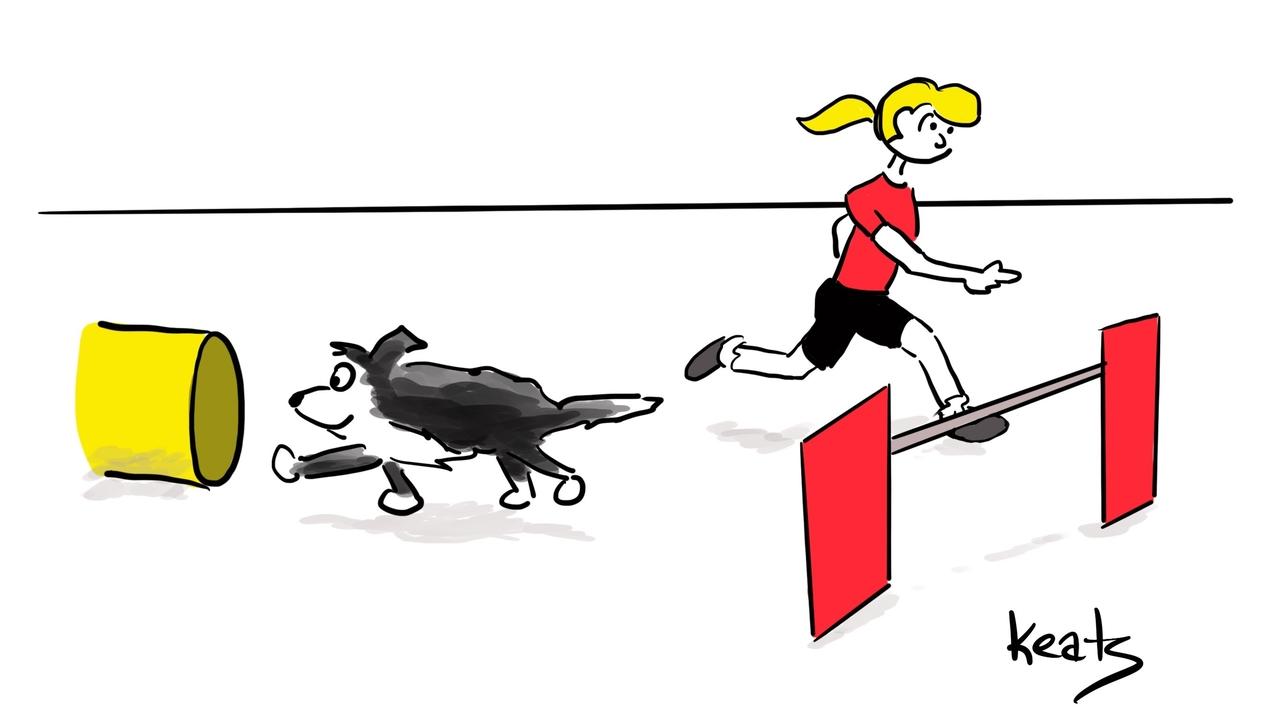Fix This To Improve Your 'Q' Rate

Why is it that even world class teams make mistakes?
They've got the skills. Their dogs are well-trained. Yet they still make silly little errors.
And it's often the same reason you make mistakes.
Handlers *assume* the dog is going to do what the handler asks.
"But wait!" you say. "I train so I can trust my dog!"
Ah yes, there lies the problem. Handlers don't recognize the difference between trusting your dog to do something and assuming he will do something.
The difference between trust and assumption
Here is a simple explanation:
Trust is confidence in your dog. You know your dog is trained and capable of doing what you ask and he will follow through with your signals within the scope of his abilities — because he has proven time and time again that he will.
Assumption is the mistaken belief that your dog will follow through with a behaviour you have signalled even if you are focused elsewhere and disconnected with him.
This happens in different ways. Here are a few:
- The handler is rushing and gives a wishy-washy signal, then runs off, assuming the dog will take the obstacle.
- The handler doesn't recognize the dog is still "asking a question" (the dog hasn't fully processed or bought into the handler's signal).
- The dog is extremely well trained, so the handler gets lazy with her handling.
- The handler's mind is elsewhere (e.g. lamenting the last wide turn or trying to remember the course) and the dog senses the lack of connection and intention, and responds in kind.
You know — the kind of handling error that you get mad at yourself about ... because the dog was perfectly capable of performing the task and you let him down.
Notice these are not gross training errors — such as a dog missing a clearly signalled and very doable weave pole entrance or leaping off a contact — that require remedial dog training work.
These breaks in communication are unnecessary handler mistakes and, if they happen often enough, destroy the trust between a handler and dog.
Identifying the specific connection problem
Here are some problem areas to consider:
1. Sometimes, your connection breaks because you are indecisive, not sure where you are going, or your dog surprises you. This is usually a problem to do with walking and reading a course. Have a clear plan and execute with intent.
2. Other times, a break in connection happens because you aren't able to execute a skill well yet, or you feel rushed trying to get to a handling position. Be in the moment, run with skills you are confident with, and focus more on your dog. Be sure to watch for his intention to commit or not to commit to something, before you take off to get to your next handling move.
3. Another issue can be your handling system and training aren't consistent and cohesive. This leaves your dog asking more questions or not trusting you, and slows down his responsiveness.
4. The simplest answer is you haven't learned to be completely focused on task for a full 30- to 60- seconds. This can be the result of bad training habits or poor training progressions.
A quick drill to try
To help improve the length of time you can focus on your dog, start with short, simple drills, and focus on seeing his commitment to each obstacle. Make sure you actually see commitment each and every time, and don't let your focus falter.
(To be clear, I'm not talking about babysitting your dog to each obstacle, I'm talking about seeing your dog's intention to commit and perform independently.)
Does your attention drift? No? Then make the drill slightly longer.
I often tell people in seminars I will give them a million dollars if all they focus on is making sure their dog takes every obstacle.
I don't give any technical information to cloud their minds (and I'm not asking them to over-handle). I just have them focus correctly and intently on the task.
Suddenly they start going clean on a regular basis.
Assumptions make you blind
Always remember, no matter what you think *should* happen, you aren't running a virtual dog, you are running your buddy.
Staying connected is the most important thing when performing at your best.
Assumptions take you out of the moment and blind you to what is really happening.
Stop making assumptions.
Commit to every obstacle.
Focus on running your dog rather than the course, and I guarantee you will make fewer mistakes, improve your 'Q' rate — and enjoy connecting with your dog a whole lot more.
I want to improve my mental game!
Please send me the FREE 10-Part "Power Up Your Mental Game" course!
You can unsubscribe at any time.

